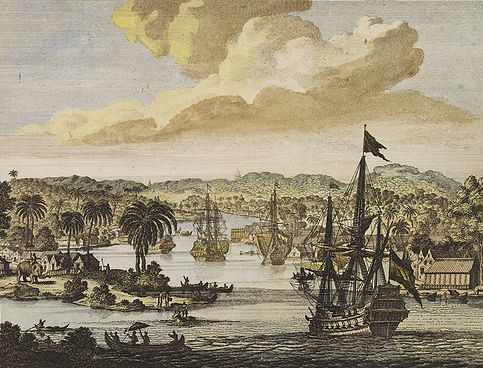Chattogram is in the news once more as police declare ISKCON a terrorist organization to justify their state-sponsored Hindu genocide. However, the blame for all of this lies at the door of Jawahar Lal Nehru and his CON party. Nehru is celebrated as the first non-elected Prime Minister of India as well as the Blunder Boy of Bharat.
Among his many machiavellian mistakes, the refusal to incorporate the Hindu-majority Chattogram region into India cost millions of Sanatani lives. His inability to stand for Sanatanis left the Hindus and Buddhists of Chattogram vulnerable, sparking decades of suffering, violence, and relentless ethnic cleansing. Today, Bangladesh’s Hindu community stands as a dwindling fraction of its past, bearing the scars of Nehru’s fatal oversight. Let’s unlock this chapter of history that unmasks the cost of Nehruvian Blunders!
The Rich Legacy of Chattogram: A Forgotten Hindu Heritage

Chattogram, known for centuries as a center of Sanatan Dharma, was historically rich in Hindu and Buddhist culture. Its name, rooted in Sanskrit, signifies “land of hills” – a reference to its hill tracts. This was once a thriving spiritual and cultural life of the region. From the medieval period, the region attracted Hindu scholars, traders, and pilgrims. Its legacy is further enriched by vibrant Buddhist communities who practiced their faith in harmony with Hindu traditions.
By 1947, Chattogram was a predominantly non-Muslim area, with nearly 97% of its population identifying as Hindu or Buddhist.
As partition loomed, these communities hoped to join India, aligning with the Hindu-majority lands. They assumed that since their demography matched the criterion of partition based on religion, they would be part of India. However, this aspiration met a tragic fate under Nehru’s leadership, despite the desperate pleas of the Chakma leaders. Even Sardar Patel’s support for their cause lost to Radcliffe’s control over J.L. Nehru and Bharat’s destiny.
Nehru’s Neglect and the Lost Opportunity of 1947
During the pivotal days leading up to partition, the 3rd June Plan laid out clear guidelines for division. The Muslim-majority areas would join Pakistan, and Hindu-majority regions would stay with India. By this logic, Chattogram should have naturally been a part of India. Chakma leaders traveled to New Delhi, where they were initially assured by Indian National Congress leaders that their region would be included. Yet, when the time came, Nehru faltered in the face of Sir Radcliffe’s decision, despite the fact that Radcliffe had never visited Bengal before the partition of Bharat!
The Bengal Boundary Commission, led by Sir Cyril Radcliffe, faced pressure from the Muslim League.
The Muslim league argued that the Chittagong Hill Tracts (CHT) were crucial to the economy and geography of East Bengal.
After awarding CHT to Pakistan.
SKC- "We are resisting. I am sent to you for arms & ammunition".
Sardar- "Only arms & ammunition"?
SKC- "Yes. Only arms & ammunition. People of CHT are ready to fight out their own field. They can adopt to all weapons necessary at present." pic.twitter.com/pazSfx41nT
— The Silenced Voices of CHT (@SaveCHT) October 31, 2019
Radcliffe’s decision, influenced by Nehru’s reluctance to intervene decisively, assigned Chattogram and CHT to East Pakistan. On 15th August 1947, hopeful Chakma leaders hoisted the Indian flag in Rangamati, only to have it torn down by Pakistani soldiers six days later. The prominent leader S.K. Chakma was forced to flee to India, where he sought support for military intervention. Though Sardar Patel favored the action, Nehru ultimately rejected it, afraid that any action over Chattogram may lead to an altercation over Kashmir.
The Aftermath: A Massacre of the Abandoned
Nehru’s weak spine started a dark chapter for Chattogram’s Hindu and Buddhist communities. Post-independence, Pakistan embarked on a brutal campaign of demographic change. The East Pakistan government adopted a strategy of resettling Muslim families in the Hill Tracts. They aimed to dilute the non-Muslim population and erase Chattogram’s Sanatani legacy.
In 1964, the East Pakistan government stripped the region’s special autonomous status.
The Kaptai Dam project in 1964 led to massive displacement as 20,000 hectares of land was submerged under water. Consequently, leading to the crippling of the tribal economy, and displacement over 100,000 people. Later, insurgencies followed in the region with the Santi Bahini group forming to resist forced displacement and religious oppression. The Chakmas, among others, fled to India, seeking refuge in places like Tripura and Mizoram.

In 1971, the Hindu and Buddhist populations suffered horrific violence from the Pakistani Razakars during the Bangladesh Liberation War.
The Razakars – a pro-Pakistani militia – unleashed waves of terror, targeting Hindus and Buddhists in brutal pogroms. Chattogram’s temples were desecrated, properties looted, and families torn apart. Post-independence, thousands of Hindus were killed, and countless others were forced to flee in terror. This was only the beginning of a calculated ethnic cleansing, fueled by Nehru’s refusal to safeguard a Hindu-majority region that begged to be part of India.
The tragedy of 1971, during the Bangladesh Liberation War, highlighted the horrors even further. The Pakistan Army’s genocide against Hindus, assisted by the Razakars, claimed the lives of an estimated 300,000 Hindus across Bangladesh. In Chattogram, this campaign targeted Hindus in a merciless attempt to extinguish their existence. Homes were burned, families destroyed, and temples demolished – memories of this massacre still haunt the surviving Hindu families today.
Decades of Ethnic Cleansing: From 97% To Less Than 20%

Chattogram’s Sanatani population has plummeted drastically, from 97% in 1947 to less than 20% today. Muslims, who once represented a small minority, now dominate the region due to systematic state-supported persecution. Chattogram’s ancient Hindu and Buddhist population has been decimated by violence, forced conversions, and relentless migration out of sheer necessity.
The Sanatanis of Chattogram are now the persecuted minority of a nation that is hell-bent on destroying its legacy.
Very scary news is coming for Hindus from Bangladesh. In Chattogram, Bangladesh Army brought with itself complete data of which houses belonged to Hindus and after entering the houses of Hindus, Hindus were shot. The dead bodies of Hindus were loaded on trucks and thrown at an… pic.twitter.com/hveURHfhU1
— Baba Banaras™ (@RealBababanaras) November 6, 2024
Even today, Chattogram’s Hindus endure waves of terror. Reports continue to emerge of police and army violence targeting Hindus and desecrating Hindu temples. The anti-Hindu genocide that began with Nehru’s blunder shows no sign of abating. Today, Chattogram now pays the price of a decision made over seven decades ago. Ultimately, Nehru’s disregard for Sanatani communities led to the decimation of Hindus and Buddhists who were the bedrock of this land’s identity.
Hindus Continue To Pay For Nehruvian Blunders
This feels like a misunderstanding because Islam is a peaceful and tolerant religion. https://t.co/VNN6fYDqh6
— Gad Saad (@GadSaad) September 14, 2024
Nehru has left a haunting legacy for the Hindu community of Chattogram and beyond. Therefore, Bharat needs to remember the cost of Nehru’s decisions – the Hindu lives lost, the families torn apart, and a cultural legacy that faces extinction.
Nehru’s refusal to protect Chattogram speaks to a larger pattern in his policies – a pattern that prioritized political ideals over the lives of Hindu communities.
#India Urges #Bangladesh to Protect Hindus from Extremist Elements in Chattogram, Bangladesh
Concern was raised about a police operation in Chattogram which saw clashes between the authorities & the Hindu community.
India wants Dhaka to take strong measures against extremism. pic.twitter.com/SbSAIlCb2a
— NewsFreak 2.0 (@_peacekeeper2) November 8, 2024
Even today, the Congress Party follows in Nehru’s footsteps, often turning a blind eye to anti-Hindu violence and discrimination. From Chattogram’s massacre to the recent targeting of Hindu temples, a direct line can be drawn back to Nehru’s original betrayal. Thus, today’s Bharat and Modi 3.0 needs to right a historic wrong. Sanatanis need to stand with the Hindus and Buddhists of Chattogram while the Yunus regime approves state-sponsored ethnic cleansing of the region. Unfortunately, Chattogram’s Sanatani community has paid and continues to pay for the blunders of one man and his ego!
References:
- https://ia600405.us.archive.org/6/items/the-partition-and-the-chakmas/The%20Partition%20and%20The%20Chakmas.pdf
- Guhathakurta, Meghna. (2012). Amidst the winds of change: The Hindu minority in Bangladesh. South Asian History and Culture. 3. 288-301. 10.1080/19472498.2012.664434.
- Jhala AD. Dam(n)ing the hills: Indigeneity, American aid, and Cold War politics in the Kaptai Dam, East Pakistan, 1957–1964. Modern Asian Studies. 2023;57(1):70-99. doi:10.1017/S0026749X21000561


